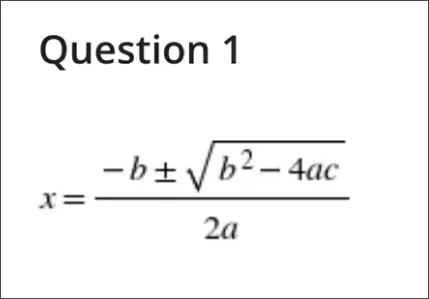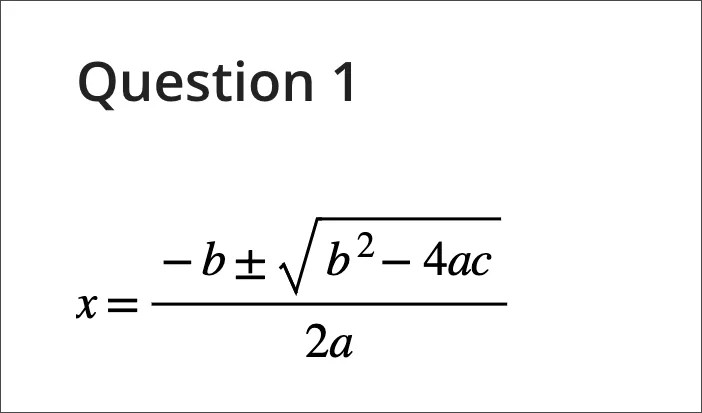Calculated Numeric Questions
Note
This information applies only to the Original Course View. Your institution controls which tools are available.
With Calculated Numeric questions, students are presented with a question that requires a numeric answer. The question doesn't need to be a mathematical formula. You can provide a text question that requires a numeric answer. Calculated Numeric questions resemble Fill in the Blank questions where correct answers are numbers.
Students may enter a number as an answer. The number can be an integer, decimal, or scientific notation. The largest value supported is 16 digits.
Instructors may combine text and mathematical formulas in the question.
Instructors may define an answer range. The range value can be an integer, decimal, or scientific notation. The largest value supported is 16 digits.
The answer field validates only numeric digits.
Example:
If the average human body temperature under normal conditions ranges between 36.5 and 37.5 degrees Celsius, what is the average human body temperature in degrees Fahrenheit?
You can specify an exact numeric answer, or you can specify an answer and an allowable range.
Calculated Numeric questions are graded automatically.
Note
Calculated numeric answers must be numeric, not alphanumeric—42, not forty-two.
Watch a video about the Calculated Numeric Question type
The following narrated video provides a visual and auditory representation of some of the information included on this page. For a detailed description of what is portrayed in the video, open the video on Vimeo.
Create a Calculated Numeric question
Access a test, survey, or pool. From the Create Question menu, select Calculated Numeric.
Type the Question Text and the Correct Answer. This value must be a number.
Optionally, allow an answer range. The range value can be an integer, decimal, or scientific notation. The largest value supported is 16 digits.
Select Save.

Math formulas render as SVG images
Instructors and students often use math formulas in science, technology, engineering, and math (STEM) courses. In the past, formulas might render slowly or lose quality when zoomed. Now we will render math formulas as images in Scalable Vector Graphics (SVG) format. This allows users to zoom in or enlarge formula images without losing quality. This change also improves accessibility for users with low vision.


Users can create math formulas using the text editor. Some content types include a description. The description appears on the Course Content page. Some notifications on the Activity Stream also display the description. When a description for a discussion or journal includes a math formula, we replace the formula image with '[Math formula].' When the user selects the content or notification, the math formulas will render as images.

